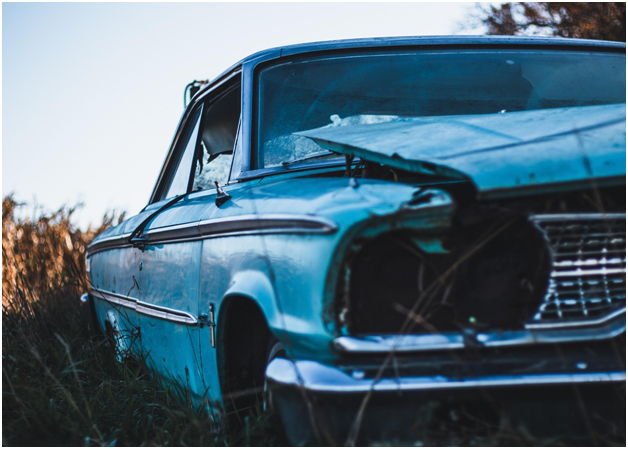When your car stops running or becomes too expensive to repair, junking it may feel like the end of the road. But what most people don’t realize is that it’s not just about getting rid of scrap metal — it’s about reclaiming value from parts and materials that still serve a purpose. Vehicles are among the most recycled consumer products in the world, yet many of their recyclable components go unnoticed.
Your old, non-functioning car might be hiding more reusable value than you think. Recyclers and salvage yards don’t just strip the engine or melt down the frame. From electronics to fabrics, modern vehicles contain a wide variety of materials that can either be reused, resold, or processed in eco-friendly ways.
So, what’s recyclable beyond the obvious metal shell? Here are five surprising items in your junk car that can be repurposed instead of ending up in a landfill.
#1. Windshield and Auto Glass
Broken or intact, the glass in your vehicle, including the windshield, side windows, and rear glass, is highly recyclable. What surprises most people is that automotive glass isn’t the same as window glass. It’s specially treated for strength and safety. Windshields, for instance, consist of a layer of plastic sandwiched between two sheets of glass. While this lamination process makes recycling more complex, it’s absolutely possible.
Recycling facilities separate the materials and reuse them in a number of products. Glass from windshields is commonly used in items like glass bottles, tile flooring, and even fiberglass insulation. The inner plastic layer is sometimes repurposed into carpet backing or industrial adhesives.
If your windshield is still intact, some salvage companies resell it as a used part. This gives it another round of life in a different vehicle and reduces the demand for new materials.
#2. Catalytic Converters
Catalytic converters are responsible for reducing emissions by filtering out harmful pollutants before they leave the exhaust system. But what makes them particularly valuable is what they contain: rare metals like platinum, palladium, and rhodium.
These metals are expensive to mine and refine, so recyclers are eager to extract them from junk vehicles. Specialized recovery methods allow them to melt down and reuse these materials in new catalytic converters or even electronic devices. Depending on market prices and the type of vehicle, a catalytic converter alone could be worth a few hundred dollars.
Because of their high resale value, catalytic converters are often targeted by thieves. That’s another reason to get your car to a trusted junkyard quickly — before someone else takes what’s valuable.
#3. Electronic Systems and Modules
Modern vehicles are packed with small computers and electronics. From the engine control unit (ECU) to power window motors, these items often continue functioning long after the rest of the car has died. Some recyclers test these modules, refurbish them, and sell them as replacement parts.
The materials inside these electronics, including copper wiring, gold-plated connectors, and small circuit boards, also have value on their own. Specialized recycling centers dismantle the components, separate the metals, and purify them for reuse in the production of other electronics.
If your vehicle has newer infotainment systems, GPS modules, or backup cameras, those can sometimes be pulled and reused as entire systems or stripped for parts. Selling to companies who buy cars for junk in bulk often ensures that these components are diverted from landfills and returned to the manufacturing cycle.
#4. Car Batteries (Not Just the Standard One)
You already know your main car battery can be recycled. But many people don’t realize how deeply recycling systems for batteries have evolved and how much more gets reused than you might expect.
Standard lead-acid batteries are 98% recyclable. The lead can be resmelted and reused in new batteries, while the sulfuric acid is neutralized and repurposed in industrial processes or converted to water. Even the plastic casing can be ground down and reformed into battery covers or containers.
If your vehicle has additional battery packs, like those in hybrids or electric cars, they contain valuable metals like lithium, cobalt, and nickel. These materials are in high demand across multiple industries, including tech and green energy. Junkyards with the right partnerships or equipment can safely extract and sell these components, which gives your old car a surprisingly green legacy.
#5. Seats, Upholstery, and Interior Materials
While exterior parts like doors and mirrors often get the spotlight, the interior of your car contains dozens of recyclable or reusable elements. Your seats are more than just padding; they consist of high-density foam, fabrics, metal frames, and sometimes electronic components such as seat warmers or motors for adjustment.
Junkyards or auto recyclers may remove entire seats and resell them to drivers with damaged or worn interiors. Fabric and foam can also be stripped and reused in applications like carpet padding or soundproof insulation. Even the leather in luxury cars can be salvaged, conditioned, and reused for small craft goods or furniture repairs.
Dashboards, carpeting, and headliners also contain recyclable plastics and fibers. Some companies specialize in harvesting these materials and blending them into new manufacturing processes, including automotive sound dampening products and packaging materials.

Final Notes
Vehicle recycling goes far beyond melting metal and calling it a day. Understanding what can be salvaged in a junk car helps you see its continued usefulness even in its final chapter. By knowing what components hold value, you’re not only making a smarter financial choice — you’re also contributing to a more sustainable and efficient automotive ecosystem. Whether it is rare metals, textiles, or embedded tech, nearly every corner of your old vehicle has something to offer.


























